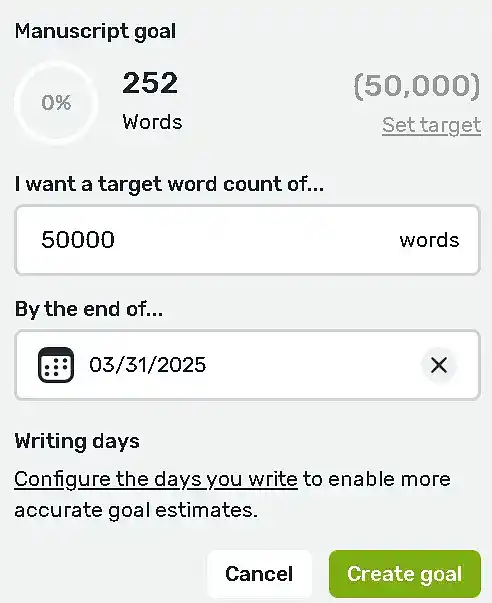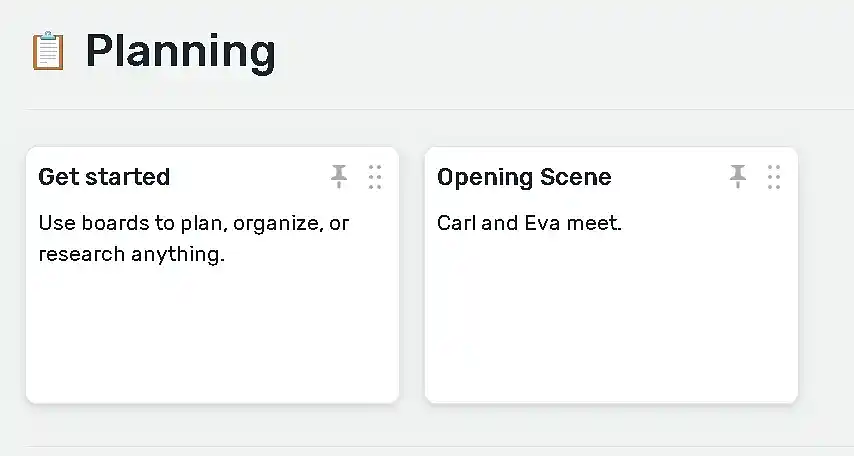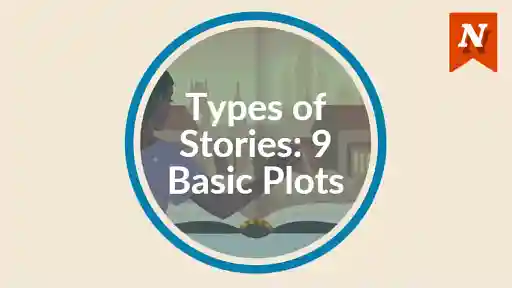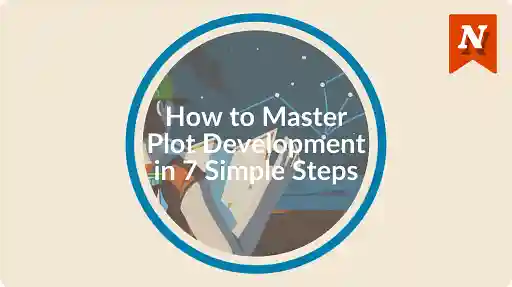Opinion is divided on whether or not you should plan a story in detail.
On one side are the pantsers who argue that the creative process can only be fully activated when you write on the fly. Crime fiction author Sophie Hannah, on the other hand, suggests that being a methodical story planner saves you time later:
If you get the planning and plan-editing process right, you should only have to write one complete draft of your novel. Of course, there will be edits later on, but you might not have to do a complete second draft that feels almost like starting from scratch. If you’d like to spend one year writing a book rather than five, planning is the way forward.
Me, I’m a planner. If I picture the writing of my book as a road trip, then planning gives me the key to actually reaching my destination: the map!
Of course, that’s not to say that I flesh out every detail of every scene in my book before I write it. But I do head into the #amwriting journey armed with enough knowledge to prepare for the twists and turns coming up ahead of me — without sacrificing the choice to take the scenic route if I change my mind.
If you’re also thinking about how to plan your book, this post is for you. Here, I’ll give you my best tips on the novel planning process and create a map that will lead to your own destination: a finished book.
Let’s start at the origin of all stories — a good story idea.
Deciding on a good novel idea
We walk past a million story ideas every day, but not every story idea deserves to become a novel. It’s all about finding that sweet spot where creativity meets pragmatism. On the creative side, a good story idea should ignite your passion and imagination — you’ll be spending months (or even years) developing it, so you better make sure that you’re excited about it in the first place!
At the same time, pragmatism ensures the idea is not only feasible to execute, but also marketable. Does the idea align with your skill set and experience as a writer? Does it have the legs to deliver a satisfying 70,000-word story with a beginning, middle, and end?
If you need help test-driving a story idea before committing to it, here are a few exercises to help you.
Create a short elevator pitch
Before starting on a new project, I like to create one-or-two-line elevator pitch to describe the driving narrative force of the book to someone who knows nothing about it.
One-sentence blurb example
For example, here are two short elevator pitches for Romeo and Juliet you could write:
Romeo and Juliet, who belong to the rival, feuding Montague and Capulet families, fall in love and are torn between familial duty and their mutual passion, leading to tragedy.
Two lovers from rival, feuding families must choose between duty and romance with deadly consequences.
In the above story scenario examples, we already have a clear sense of:
- The main characters
- Supporting characters
- Where conflict may appear (R and J's mutual households), and
- The general arc of the story (towards a tragic end)
Feel free to stop at this point! If, however, you’d like to a even more security, you can progress onto creating a one-paragraph blurb.
One-paragraph summary example
At a ball in Verona, young Romeo of the house of Montague falls for Juliet, daughter of the rival house of Capulet, much to the disgust of Juliet’s coursin, Tybalt. After swearing their love for each other they're married in secret the next day. As an act of retaliation, Tybalt kills Romeo’s friend Mercutio in a duel. Grief-stricken, Romeo attacks and kills Tybalt and is exiled as a result. Juliet's parents pressure her to marry a vain nobleman. To make her escape, she hatches a planto stage her own death and run away with Romeo. However, her lover doesn’t learn of the plan and, finding Juliet seemingly dead, kills himself. When Juliet wakes up from her staged coma, finding Romeo dead, she follows him into the afterlife.
This process should help you organize your story ideas, such as the key conflicts that may arise and their possible outcomes and consequences.
Try out a short story version for size
Another way to test your story idea and see where it could go is to riff on your story idea through a short story.
James Joyce's Modernist classic A Portrait of the Artist as a Young Man allegedly started life as a more condensed draft called 'Stephen Hero'. In a roundup where the Australian Writers' Centre asked 20 authors how they plan stories, author Graeme Simsion shared a similar approach:
In the case of Adam Sharp I wrote a short story, as a precursor. I think it’s a great way of working up a character. So, I had a bit of a sense of what I wanted to do there. But then I went back, I got the entire plot sorted out and then started again.
Due to their, well, shorter length, short stories let you experiment with different perspectives, test plot ideas and key events, or deepen your understanding of your protagonist’s backstory. By focusing on smaller, self-contained narratives, you can identify what works and what doesn’t, giving you a clearer vision for your novel.
How to plan a novel in 4 steps
With your brilliant story idea in hand, you’re now ready to start planning your novel! You can do so any number of ways: in your head, with pen and paper, or through a story planning tool. I personally use Reedsy Studio, as I like the wealth of in-built planning features it offers me. In this section, I’ll also show you how I use it to plan my book step by step.
Start by figuring out the length of your book
Returning to our metaphor of writing a book being like a roadtrip, your book’s length will determine how long your journey will be. Even though your exact word count will likely shift during the writing process, a word count target can give you clarity and direction while helping you set realistic goals.
Importantly, it will help ensure that your story fits within the expectations of your genre and target audience. Different genres have typical word count ranges that readers (and publishers) expect.
Here’s a quick cheatsheet for you of what’s the expected average novel lengths of the most popular genres:
- Science Fiction & Fantasy: 100,000-115,000 words
- Mystery & Thriller: 80,000-100,000 words
- Literary Fiction: 80,000-100,000 words
- Romance: 80,000-100,000 words
- Horror: 70,000-100,000 words
- Memoir: 80,000-90,000 words
- YA: 55,000-80,000 words
- Nonfiction: 50,000-80,000 words
- Middle Grade: 20,000-55,000 word
Once I have my target word count, I input it into Reedsy Studio so that it can calculate a writing routine schedule for me.

With your target word count in mind, you’ll also have a helpful estimate of how much space on the page you have to explore your characters, plot points, and central conflict. Speaking of which…
Sketch out the key elements of your novel
Let’s quickly go over the three story elements that you need to plan the plot of your novel.
Keep in mind that you don’t necessarily need to flesh them out to a tee at this stage. However, I’d recommend having at least a rough sketch of the following story elements in your head before you start drafting.
💁♀️ Characters
Beloved characters like Anne Shirley and Elizabeth Bennet didn’t come pre-packaged out of a box! Instead, they won readers’ hearts through the strength of their personalities, thoughts, and actions.
This starts with the author. To create fully-formed characters, you have to build them from the inside-out, from their distinct style of speech to the character traits that inform the actions they take in certain situations.
I’d suggest using a character profile template to practice doing so, like the one here. Character profiles can help you drill down to what’s at the heart of every compelling character, from your protagonists to your antagonists: their desires, flaws, and motivations that drive the central conflict of the book forward. Speaking of which…
⚔️ Conflict
The central conflict will inform the structure and key plot points of your plot, so it’s important for you to know what it is before you begin writing your novel. Generally, there are six broad types of conflict that are seen in novels, which you can learn more about in this guide about types of conflict.
You can start by thinking about your own by ensuring it directly challenges your protagonist’s core desires and flaws. What does the protagonist stand to lose if they fail? The higher your protagonist has to fall, the greater the stakes become and the more invested readers are in the outcome.
⛰️ Setting
Lastly, the setting of your story is more than just static wallpaper. A vivid, immersive, and well-developed setting can determine the very actions of your characters. How does this world challenge your protagonist? Does it provide opportunities or obstacles?
It should also support and enhance your story’s themes and conflicts. Just take Brokeback Mountain as an example — where the lonely, isolated plains and mountains of America intensify the themes of out-of-place desire, repression, and regret.
Plot your novel
At the risk of repeating myself, you don’t need to map out your entire plot in order to plan your novel. All you need are the major story beats.
In a post for Angela Ackerman and Becca Puglisi's 'Writers Helping Writers', paranormal romance writer Jami Gold gives four examples of major story beats you can use to organize your story's narrative structure:
1) Main conflict's starting point
An event or situation that gives your main character a reason to get involved in the story's central scenario.
For example, Luke Skywalker meeting Obi-Wan in Star Wars and being invited to accompany his new mentor to rescue the princess.
2) The midpoint
Approximately halfway through your story, this is a beat that either changes your protagonist's goals or adds new stakes to their main, overarching ones.
For example, at the midpoint of Austen's Pride and Prejudice, Darcy sends Lizzy a letter explaining his cold-seeming gestures and reframing her impression of him.
3) The bleak moment
Gold calls this the 'black moment'. This typically occurs around 75% through the story, and it is when the hope for a solution or resolution dims. In a 'boy meets girl' (or girl meets girl, or boy meets boy, or gender non-binary meets gender non-binary) romance story, this be the 'character loses other' opposite point of the 'meet cute' moment.
4) Climax and resolution
Typically the last quarter or less of a story, this is where conflicts come to a head. In an epic fantasy, it may be a final showdown with an antagonist. In a murder mystery, the final clue leads to conclusive identification of a killer.
Congratulations! If you finish this exercise, you’ll already have the skeleton of a story arc in place. Brainstorming and organizing your ideas around just these four beats already begins to give your story structure and direction, plus that vital ingredient for an engaging story: change.
Keep an organized series of scene ideas (plus any you scrap)
After you’ve figured out your four major story beats, you may prefer to dive directly into the writing process. Or you may prefer to continue dreaming up scene ideas to fill the rest of your story out — indeed, you might want to come up with the “minor” story beats that will keep your book ticking along as well. Blake Snyder refers to fifteen different types of story beats in his popular 'Save the Cat' approach to story structure, for instance.
If that’s the case, remember to jot down all of the scene ideas that come to mind at any given point in the day. I personally use scene cards in Reedsy Studio to organize and visualize my scene ideas.

If you find it easier, think of scenes in duos of 'scene' and 'sequel' (the outcome of a previous scene) until you’ve planned out your entire novel.
Sample novel plan: Pride and Prejudice

To show you what I mean, here’s an example of a simple story beat breakdown to form the tentpoles of your story structure, using Pride and Prejudice as an example:
1. Main conflict's starting point
- Wealthy bachelor Mr Darcy arrives at Netherfield, accompanying his friend Mr Bingley.
- Jane (Elizabeth’s eldest sister) and Bingley form an instant connection, while Elizabeth and Darcy immediately clash.
- Darcy is aloof. His remark, overheard by Elizabeth, that she is "not handsome enough to tempt [him]" establishes tension.
- The setup also includes ridiculous clergyman Mr Collins, the Bennet girls’ cousin, who will later seek a wife among them.
2. The midpoint
- Mr Collins proposes to Elizabeth, and she firmly rejects him, shocking her mother.
- The tension and misunderstandings between Elizabeth and Darcy escalate, making for electric social encounters.
- Darcy unexpectedly proposes to Elizabeth — but does so with an air of condescension, emphasizing how he is lowering himself to love her. Elizabeth furiously rejects him.
- Darcy’s letter to Elizabeth reveals the truth: Wickham is the villain, not Darcy. This is an internal shift where Elizabeth starts questioning her prejudices.
3. The bleak moment
- Bingley leaves Netherfield, seemingly for good, and Jane is heartbroken.
- Lydia (Elizabeth’s youngest sister) runs away with Mr Wickham, creating a family scandal. The Bennets fear this will ruin their family’s reputation, making it impossible for Elizabeth or Jane to marry well.
4. Climax and resolution
- Elizabeth learns that Darcy secretly resolved Lydia’s scandal by forcing Wickham to marry her and paying off his debts. When Darcy and Elizabeth meet again, Darcy is a changed man: humble and kind.
- Bingley returns and proposes to Jane.
- Darcy proposes again, this time with true humility, and Elizabeth accepts, having overcome her own prejudices.
- The couples (Elizabeth & Darcy, Jane & Bingley) are happily united.
There you have it! With your minor and major story beats in place, you’ll have a full plan for the novel-in-the-making ahead of you. The next step now is to write it — and for that, I recommend that you read this post. Good luck!








